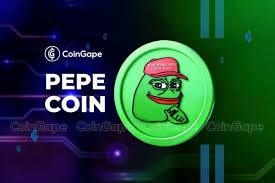The Evolution of Pepe: From Meme to Movement

Introduction
Pepe the Frog, once a harmless cartoon character in Matt Furie’s ‘Boys Club’, has evolved into a cultural phenomenon that transcends its original comedic roots. This green frog has become a symbol of various movements online, often associated with complex social and political narratives. The evolution of Pepe reflects broader trends in internet culture and discourse, making it a relevant topic for understanding contemporary digital communications.
The Birth of Pepe
Pepe first appeared in Furie’s comic series in 2005, where he was portrayed as a laid-back amphibian with a catchphrase that resonated with the young audience. However, as the character transitioned to platforms like 4chan and Reddit, internet users began to modify Pepe’s image, leading to a plethora of memes that showcased a range of emotions—from sadness to joy. By 2015, Pepe had largely established himself as an essential meme in online culture.
The Dark Turn
In the following years, Pepe’s imagery took a darker turn as certain groups appropriated the character for political and extremist purposes. The Anti-Defamation League (ADL) added Pepe to its Hate Symbols Database, primarily due to the character’s usage in hate speech and propaganda during the 2016 U.S. presidential election. This transformation marked a significant departure from Pepe’s original lighthearted nature and raised questions about ownership of online symbols.
Mitigating the Meme
In response to the appropriation, Matt Furie attempted to reclaim the character, launching campaigns to restore Pepe’s image and promote positivity. Furie’s efforts included the #SavePepe initiative, encouraging people to use the frog in a non-controversial and joyful manner. This initiative highlighted the ongoing struggle about the ownership and interpretation of cultural symbols in social media contexts.
The Continuing Legacy
Today, Pepe’s image remains divisive. Some view him as an emblem of internet freedom and creativity, while others associate him with darker, more harmful ideologies. Moreover, as memes continue to evolve, so does the potential for Pepe to represent new ideas and movements. This ambiguity serves as a powerful reminder of how cultural symbols can shift in meaning based on their social context and the narratives surrounding them.
Conclusion
The journey of Pepe the Frog is a fascinating case study in how internet culture operates and the fluidity of meaning in the digital age. As social media evolves, the character’s significance will likely continue to adapt, reflecting changes in societal attitudes and political developments. For individuals exploring the complexities of online identity and community dynamics, Pepe represents both the creative spirit of meme culture and the potential for misinterpretation and controversy.
